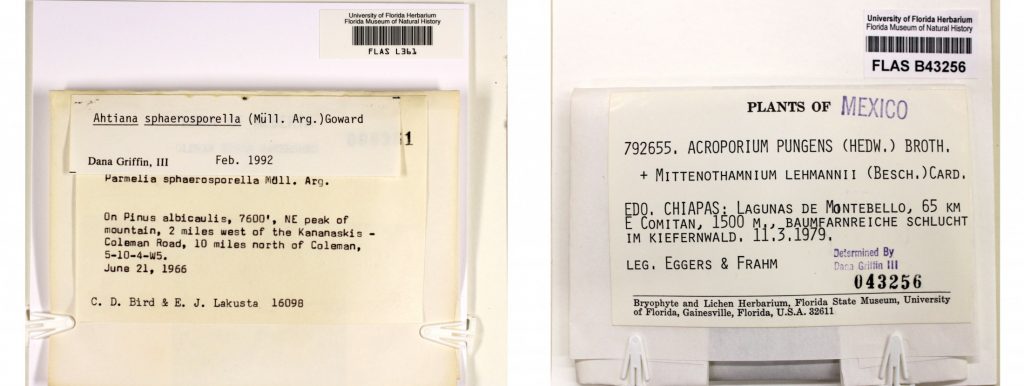To all the FLAS specimens we added an archival grade card (5 1/2″ x 5 ¾” archival grade cards) to give additional support to the specimens, and to provide a flat paper surface on which to apply the barcode label and determination labels that were otherwise stapled and covering the labels. The barcode labels were place on the upper right side of the cardboard so they can be easily scanned and visible on the boxes that hold the specimens.
The barcodes used for this project were previously printed using Digitek labels (B274 Polypropylene Base Material, P236 – Adhesive, L107 .5 mil clear matte laminate) and code 39 printed. In the cases in which FLAS accession numbers were previously designated, barcodes that match the FLAS catalog number were applied. The specimens lacking accession numbers were assigned barcodes in a sequential manner.

The retroactive barcoding has been labor intensive and is one of the bottlenecks of this project as we have only one set of barcodes that have to be shared by all our students. Additionally, matching barcodes is prone to errors, and the incorrect assignment of barcodes in one point cascades when another sample needs to be barcoded.
The most common problems that we have found while matching barcodes to accession numbers are that the latter are not unique, especially in old collections, where the same barcode has been used multiple times by mistake. In older collections we also have found that the same numbers have been given to mosses and hepatics. In more modern collections, the most common error is to mistakenly use the same barcodes for gifts that enter the collection at the same time that other specimens are being accessioned.
We strongly recommend sequential barcoding.